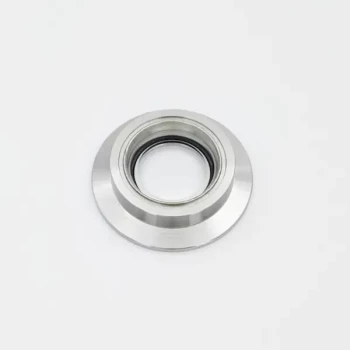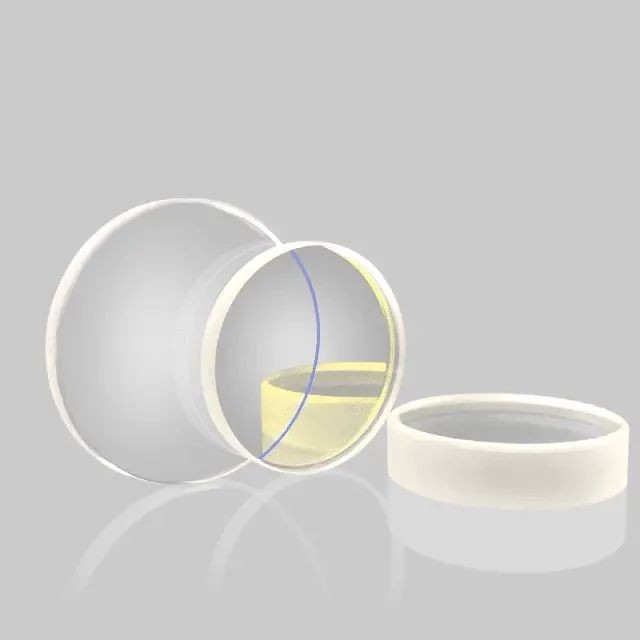
Optical Materials
Optical Window Glass Substrate Wafer Sheets Zinc Sulfide ZnS Window
Item Number : KTOM-ZSS
Price varies based on specs and customizations
- Thickness
- ±0.2mm
- Surface Flatness
- N<1λ
- Surface Quality
- 60/40~40/20
Shipping:
Contact us to get shipping details Enjoy On-time Dispatch Guarantee.
Why Choose Us
Reliable PartnerEasy ordering process, quality products, and dedicated support for your business success.
Optical Zinc Sulfide
Zinc Sulfide (ZnS) is grown using chemical vapor deposition (CVD), known for its strength and hardness, making it suitable for military and harsh environments. It is commonly used in the 3-5μm and 8-12μm ranges. Additionally, MultiSpectral grade ZnS (MS) eliminates voids and defects, extending its usability to the visible region.
Detail & Parts



Advantages of Zinc Sulfide
- Broad Range Compatibility: ZnS lenses are designed to be compatible with a variety of IR ranges, making them versatile for different applications. Whether used uncoated or with anti-reflective (AR) coatings, they can be tailored to specific IR wavelengths.
- Low Chromatic Aberration: ZnS exhibits low dispersion, resulting in minimal chromatic aberration. This characteristic ensures that the lenses can accurately focus and deliver high-quality images without distortion or color fringing.
- Rugged Optics: ZnS lenses are well-suited for infrared applications that require durable and robust optics. They can withstand harsh environments, making them reliable for use in challenging conditions.
Precautions
- Special care should be taken when handling Zinc Selenide as it is a toxic material. Always wear rubber or plastic gloves to avoid the risk of contamination.
- The damp reunion will affect ZnS powder dispersion performance and using effects, therefore, Zinc Sulfide ZnS powder should be sealed in vacuum packing and stored in a cool and dry room, the Zinc Sulfide ZnS powder can not be exposure to air. In addition, the Zinc Sulfide ZnS powder should be avoided under stress.
Provide customized services
Through the implementation of innovative and state-of-the-art melting processes, we have acquired extensive expertise in the development and manufacture of quality glass products, offering a wide range of optical glass products for a variety of commercial, industrial and scientific applications. The company provides various specifications of optical glass such as raw glass, cut parts and finished components, and cooperates closely with customers to customize products according to customer needs. With an unwavering commitment to quality, we ensure our customers receive the perfect solution tailored to their requirements.
For further quotations, please contact us.
FAQ
What Are The Main Types Of Glass Substrates?
What Was The Role Of ZnS Screen In The Gold Foil Experiment?
What Crystal Is ZnS?
Why Is ZnS Important?
What Is Soda-lime Glass Used For?
What Is Optical Glass Used For?
What Are The Advantages Of Using Sapphire Substrates?
What Is The Composition Of Optical Glass?
Why Is Boroaluminosilicate Glass Suitable For Laboratory Glassware And Cooking Utensils?
What Are The Most Common Optical Glasses?
What Are The Applications Of Optical Quartz Glass Sheets?
What Makes K9 Glass Special?
What Is A CaF2 Window Used For?
What Are The Properties Of Magnesium Fluoride Crystal Substrates?
What Is Silicon Used For In The Near-infrared Range?
What Are Glass Vibration Beads Used For In Laboratories?
4.8
out of
5
The ZnS window arrived promptly and in perfect condition. Installation was a breeze thanks to the clear instructions provided.
4.7
out of
5
This window is a game-changer for my lab. The clarity is unmatched, and the durability is impressive. Highly recommended!
4.9
out of
5
The quality of this window is exceptional. It's sturdy, scratch-resistant, and provides excellent UV protection. Worth every penny!
4.6
out of
5
I'm thoroughly impressed with the technological advancements incorporated into this window. It's a testament to KINTEK SOLUTION's commitment to innovation.
4.8
out of
5
The speed of delivery was remarkable. I received the window within days of placing the order. Kudos to the efficient logistics team!
4.7
out of
5
The value for money is unbeatable. This window is not only affordable but also delivers exceptional performance. I'm delighted with my purchase.
4.9
out of
5
The durability of this window is outstanding. It has withstood harsh weather conditions without any signs of wear or tear. A testament to its superior craftsmanship.
4.6
out of
5
The technological advancement of this window is truly impressive. It's equipped with features that enhance its functionality and longevity.
4.8
out of
5
The clarity of this window is exceptional. It provides an unobstructed view, making it ideal for laboratory applications.
4.7
out of
5
The installation process was incredibly smooth. The instructions were clear and concise, allowing for a seamless setup.
4.9
out of
5
The customer service provided by KINTEK SOLUTION was impeccable. They were responsive, informative, and went above and beyond to ensure my satisfaction.
4.6
out of
5
The energy efficiency of this window is commendable. It has significantly reduced our energy consumption, leading to cost savings.
4.8
out of
5
The versatility of this window is remarkable. It can be customized to meet specific requirements, making it suitable for various applications.
4.7
out of
5
The broad range compatibility of this window is a major advantage. It seamlessly integrates with different IR ranges, enhancing its functionality.
4.9
out of
5
The low chromatic aberration of this window is a standout feature. It delivers sharp, distortion-free images, crucial for precise laboratory work.
4.6
out of
5
The ruggedness of this window is exceptional. It can withstand harsh conditions, making it ideal for demanding laboratory environments.
4.8
out of
5
The ease of maintenance of this window is commendable. It can be cleaned effortlessly, ensuring a pristine appearance and optimal performance.
4.7
out of
5
The extended warranty provided by KINTEK SOLUTION instills confidence in the longevity and reliability of this window.
4.9
out of
5
The overall performance of this window is outstanding. It meets and exceeds all my expectations, making it an invaluable addition to my laboratory.
REQUEST A QUOTE
Our professional team will reply to you within one business day. Please feel free to contact us!
Related Products

Optical Window Glass Substrate Wafer Single Double Sided Coated K9 Quartz Sheet
K9 glass, also known as K9 crystal, is a type of optical borosilicate crown glass renowned for its exceptional optical properties.
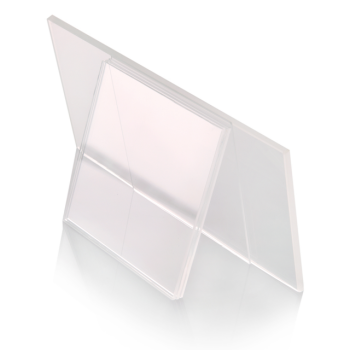
Optical Window Glass Substrate Wafer Quartz Plate JGS1 JGS2 JGS3
The quartz plate is a transparent, durable, and versatile component widely used in various industries. Made from high-purity quartz crystal, it exhibits excellent thermal and chemical resistance.
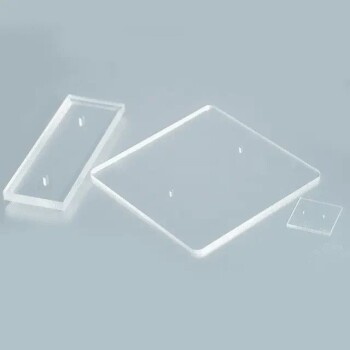
MgF2 Magnesium Fluoride Crystal Substrate Window for Optical Applications
Magnesium fluoride (MgF2) is a tetragonal crystal that exhibits anisotropy, making it imperative to treat it as a single crystal when engaging in precision imaging and signal transmission.

Optical Window Glass Substrate Wafer Barium Fluoride BaF2 Substrate Window
BaF2 is the fastest scintillator, sought-after for its exceptional properties. Its windows and plates are valuable for VUV and infrared spectroscopy.
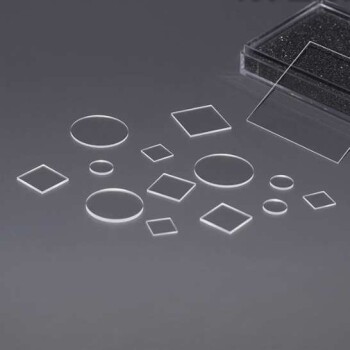
Infrared Transmission Coating Sapphire Sheet Substrate Window
Crafted from sapphire, the substrate boasts unparalleled chemical, optical, and physical properties. Its remarkable resistance to thermal shocks, high temperatures, sand erosion, and water sets it apart.

Optical Ultra-Clear Glass Sheet for Laboratory K9 B270 BK7
Optical glass, while sharing many characteristics with other types of glass, is manufactured using specific chemicals that enhance properties crucial for optics applications.

CF Ultra-High Vacuum Observation Window Stainless Steel Flange Sapphire Glass Sight Glass
Discover CF ultra-high vacuum observation windows with sapphire glass and stainless steel flanges. Ideal for semiconductor manufacturing, vacuum coating, and more. Clear observation, precise control.
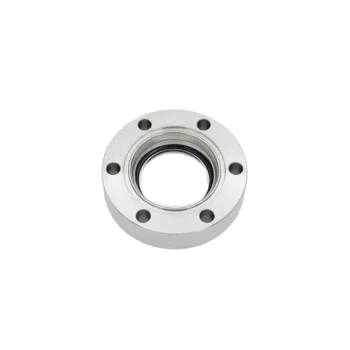
CF Ultra-High Vacuum Observation Window Window Flange High Borosilicate Glass Sight Glass
Discover CF ultra-high vacuum observation window flanges with high borosilicate glass, perfect for semiconductor manufacturing, vacuum coating, and optical instruments. Clear observation, durable design, easy installation.
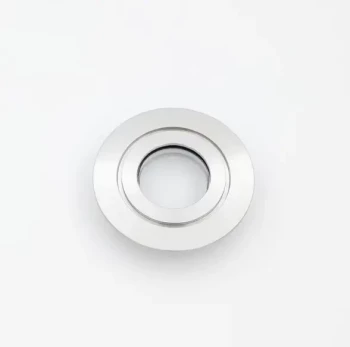
KF Ultra-High Vacuum Observation Window Stainless Steel Flange Sapphire Glass Sight Glass
Discover the KF Ultra-High Vacuum Observation Window, featuring sapphire glass and stainless steel flange for clear, reliable observation in ultra-high vacuum environments. Ideal for semiconductor, vacuum coating, and scientific research applications
Related Articles

Optical Quartz Plate: A Comprehensive Guide to Applications, Specifications, and Usage
Discover the versatility of optical quartz plates, exploring their uses in various industries, key specifications, and factors that differentiate them from glass. Gain insights into their applications in ultraviolet transmission, precision optics, and more.

Revolutionize Your Spectroscopy Analysis with FTIR Pellet Press
FTIR (Fourier Transform Infrared) spectroscopy is a widely used technique to analyze the chemical composition of various materials. This method is particularly useful for samples that are difficult to analyze using other techniques.

Unveiling the Exceptional Properties and Applications of Optical Quartz Plates
Discover the remarkable characteristics and diverse applications of optical quartz plates, including their superior ultraviolet transmission, thermal stability, and use in lenses, lighting devices, and semiconductor manufacturing.

Why PECVD is Essential for Microelectronic Device Fabrication
PECVD (Plasma-Enhanced Chemical Vapor Deposition) is a popular thin film deposition technique used in microelectronics device fabrication.

Unlocking the Power of Optical Quartz Plates: Applications and Benefits
Delve into the world of optical quartz plates, exploring their exceptional properties, diverse applications in industries like optics, electronics, and more. Discover their advantages, including low thermal expansion, high temperature resistance, and precise optical clarity.

An In-depth Analysis of Cold Isostatic Pressing Services
Cold isostatic pressing (CIP) services utilize extremely high pressures to sterilize products or cold compact powders. CIP is particularly effective in producing complex shapes and increasing the final density of materials.

Infrared Bands and Window Selection for Hypersonic Vehicles
Explores the challenges and solutions in selecting infrared bands and window materials for hypersonic vehicles, focusing on imaging and guidance systems.

Common Optical Materials and Their Properties
An overview of various optical materials, their properties, and applications across different spectral ranges.

Optical Components: Window Sheets and Their Applications
An overview of various types of optical window sheets, their materials, precision, and coating options.

Advancements in Diamond Optical Window-Related Components
Explores the development and applications of diamond optical window components in various fields, including defense, aerospace, and energy.

Comprehensive Guide to Optical Windows: Material Properties and Surface Specifications
This article delves into the properties and specifications of optical windows, focusing on material properties, surface quality, and anti-reflection coatings.

Factors in Selecting Large Optical Windows
Considerations for choosing large optical windows, including material, polishing, and coating.
